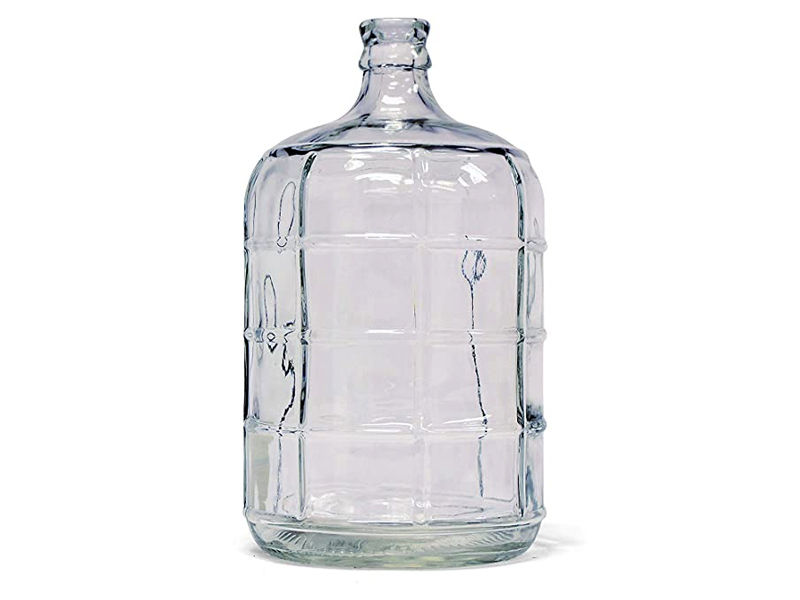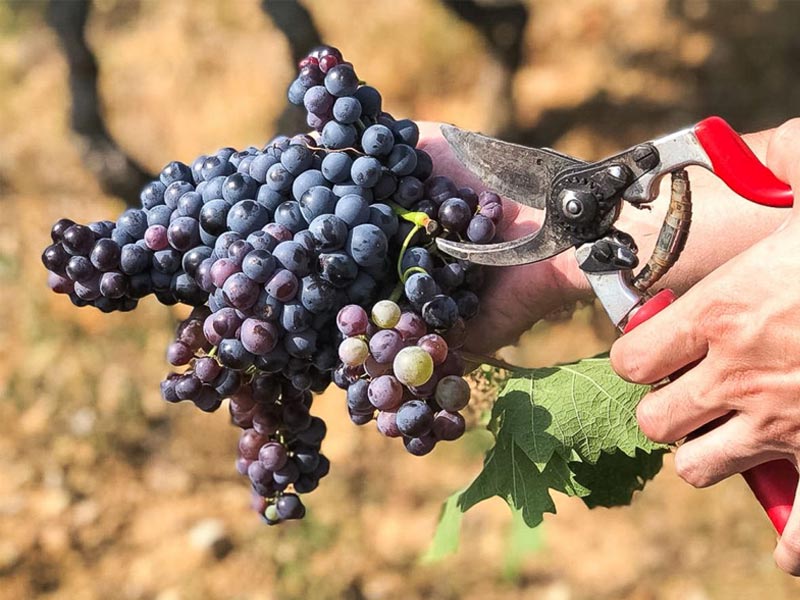Commercial Process To Make Wine?
How Is Wine Made? The entire world has now joined together to exchange skills and develop new ones. Wine has never been better than it is right now! But what are the fundamentals? What transforms these seemingly innocuous grapes into bottles of sharp reds and crisp whites? Each brand generates distinct flavors for wine lovers to enjoy.
Gather The Grapes

Although this may appear to be the simplest task in the winemaking process, it requires a lot of consideration. This is because the taste of a grape varies depending on when it is picked, with acidity, sweetness, and flavor all being altered. Grapes can be harvested by hand or mechanically, depending on the size of the vineyards.
In addition, if picking occurs on warm days, night picking may be done instead to boost efficiency.
Grapes Should Be Crushed

They will always be crushed, regardless of the type of wine or grape involved. Nowadays, the majority of wines are destemmed, which is simply a machine that eliminates the stems and pieces you don’t want while crushing the grapes into liquid mush.
Fermentation

Fermentation is the following phase, and it is this process that will shape the flavor. The sugar in the combination is converted into alcohol using a variety of procedures to complement the various types of grapes. The most natural method is to just add yeast and let it ferment over time. Red wines produce carbon dioxide and are often fermented at higher temperatures than white wines. There is also a chance that grapes would be crushed after fermentation to enhance their luscious smoothness.
The Wine Should Be Aged

Aging can occur at different times, in different places, and in different ways. Wines can be matured in stainless steel or oak barrels for a few months to many years, in new oak, neutral, American, or French barrels. There are even different levels of being ‘toasted,’ which involves the barrel being burned by fire. Generally, a wine’s flavor might grow more strong.
The Wine Should Be Bottled

These days, this is mainly done mechanically. After progressively filling the wine bottle to the top, the winemakers will add some nitrogen or carbon dioxide to displace any oxygen that may be remaining on top of the fill line. It’s been corked and is ready for sale!
How Is Wine Made At Home?
Grab Your Supplies
In addition to the wine components, you’ll need a few basic items to guarantee that your wine does not become contaminated by bugs or bacteria as it ages. Home winemaking should not be expensive, thus sophisticated equipment is not required. You will require the following materials:
- A 2-gallon (7.6 L) crock or glass jar (these may easily be found at vintage or secondhand stores, but be aware that many used crocks may have been used for sauerkraut or pickles, which might contaminate your wine).

- A one-gallon (3.8-liter) carboy (a glass container with a small neck)
- A kind of airlock
- A siphoning tube made of thin plastic.
- Corks or screwtops should be used to clean wine bottles.
- Tablets of Campden (optional)
Choose Your Fruit

Wine may be created from any fruit, however, grapes and berries are the most common. Select fruit that is at its height of taste. Because you don’t want chemicals in your wine, buy organic fruit that hasn’t been treated with chemicals. If feasible, utilize fruit from your garden or get it from a farmer’s market. Certain suppliers, such as Wine Grapes Direct, specialize in delivering wine grapes to home winemakers, which is ideal if you do not live near vineyards.
Also, Read How To Drink Wine?
Wash The Fruit

Remove the stems and leaves, and make sure the fruit is free of dirt or grit. Place the fruit in your crock after properly rinsing it. You can peel the fruit before crushing it, but the skin will provide a lot of flavor to the wine. The wine will be considerably milder if you peel it.
Some winemakers avoid washing the fruit before crushing it. Since fruit has natural yeasts on its surface, wine may be made using only yeast from the fruit’s skin and air.
But, cleaning the fruit and managing the yeast you add ensures that the wine’s flavor will be to your liking; letting wild yeast flourish can result in nasty flavors. If you’re feeling adventurous, you may produce two batches of wine, one with controlled yeast along with wild yeast, to see which you like.
Break Apart The Fruit

Crush and squeeze the fruit to release its juices with a clean potato masher or your hands. Continue until the fruit juice level is within 12 inches (3.8 cm) of the crock’s top. If you don’t have enough fruit and juice to almost fill the crock, top it out with filtered water. Add a Campden tablet to the mixture, which emits sulfur dioxide, destroying wild yeast and bacteria. If you’re creating wild yeast wine, avoid killing the yeast.
Instead, you may pour 2 cups of boiling water over the fruit instead of using a pill.
Because tap water includes chemicals, it might alter the flavor of your wine. Use only filtered or spring water.
Add The Honey And Mix Well
Honey both feeds the yeast and sweetens the wine. The amount of honey you add will have an immediate impact on the sweetness of your wine. Add extra honey if you like a sweeter wine. Limit your honey to 2 cups if you don’t want it as sweet. Consider the sort of fruit you’re utilizing as well. Since grapes have significant sugar content, grape wine does not require a lot of honey. Berries and other low-sugar fruits will require a bit extra honey.
If you like, you can substitute sugar or brown sugar for the honey.
If your wine isn’t as sweet as you prefer, you may always add additional honey afterward.
Mix In The Yeast

This is the moment to add your yeast if you’re using it. Pour it into the crock and mix it up with a long-handled spoon.
This combo is known as a must.
You may skip this stage if you’re creating wild yeast wine.
Fermenting the Wine
Store The Crock Overnight, Covered
It’s critical to have a cover that keeps pests out while allowing air to flow in and out of the crock. You may use a crock lid made for this purpose, or you can drape a piece of fabric or t-shirt over the opening and attach it with a thick rubber band. Overnight, place the covered crock in a warm location with a temperature of roughly 70 degrees.

Placing the crock in a chilly environment will not help the yeast develop. Keeping it in an overly warm environment will destroy the yeast. In your kitchen, choose a suitable in-between spot.
Also, Read
A Few Times Every Day, Stir The Must
The day after you create the mixture, uncover it and thoroughly stir it. Do this every 4 hours or so for the first day, then a couple of times each day for the next three days. Once the yeast begins to work, the mixture should begin to bubble. This is the fermenting process that will result in tasty wine.
Siphon And Strain The Liquid
After the bubbling stops, about 3 days later, filter off the particles and siphon the liquid into your carboy for longer-term storage. After siphoning it into the carboy, secure the airlock to the aperture to enable gas to escape while preventing oxygen from entering and damaging your wine.
If you don’t have an airlock, a tiny balloon with 5 pin-sized holes over the opening would suffice. Tape it together. This allows the gas to exit but prevents oxygen from entering.
Let The Wine Mature For At Least A Month
Let it mature for up to nine months, during which time the wine will age and mellow, resulting in a much-enhanced flavor. If you added more honey to your wine, it’s best to age it for a longer period, otherwise, it will taste excessively sweet when you consume it.

The Wine Has Been Bottled
Add a Campden tablet to the liquid as soon as the airlock is removed to prevent bacteria from causing the wine to turn to vinegar. Fill your clean bottles close to the top with wine, then cork them immediately. Let the wine mature in the bottles or drink it right away.
To keep the color of red wines, store them in dark bottles.

























